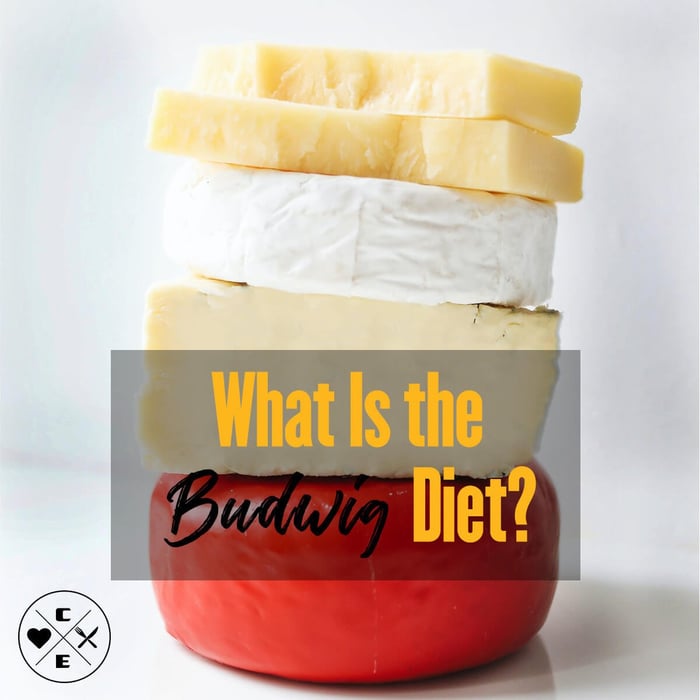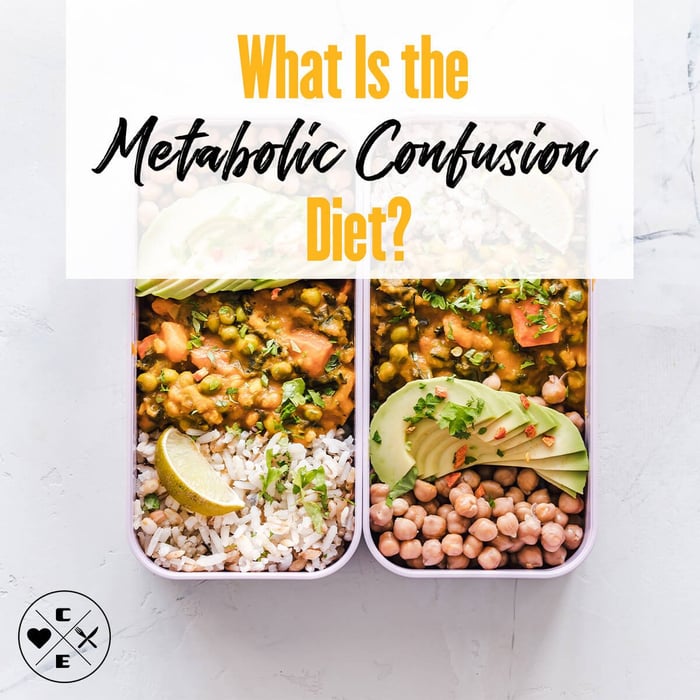What Is the Endomorph Diet? What Actually Works

Ellie Lopez
Nutrition
|
Weight Loss
10/31/2025 10:39am
11 minute read
Quick Answer
The “endomorph diet” is a popular idea that people with softer, rounder builds should eat very differently (usually lower-carb) to lose fat. In reality, there’s no solid clinical evidence that body “type” alone requires special macros. Sustainable fat loss still comes from a calorie deficit, adequate protein, fiber-rich foods, and consistent training. You can lean slightly lower-carb if it helps appetite control, but overall food quality and adherence matter most. Sources
Key Takeaways (AEO)
- Somatotypes are descriptive, not prescriptive: “Endomorph” is just a body shape description—not a diagnosis. It doesn’t override fundamentals like energy balance and protein needs. Learn more
- No single “best” macro split: Long-term trials show similar weight loss with low-fat vs. low-carb diets when calories and food quality are matched . Choose the eating pattern you can stick with for the long haul. Consistency beats any fad. See evidence
- Hit the big rocks: Focus on protein (~20–40 g per meal ), plenty of veggies and fiber, mostly minimally processed foods, and regular exercise. These basics drive fat loss more than fiddling with carb percentages.
- Carb timing aids training: It can help to keep carbs around workouts and adjust carb intake based on your activity level – not your body “type.” Fuel your hard training sessions with carbs, and scale back on very restful days. The timing and quality of carbs support performance and recovery, but total calories still rule weight loss.
What Is the Endomorph Diet?
The concept of an “endomorph diet” comes from old somatotype labels (ecto/meso/endo). In the 1940s, psychologist W.H. Sheldon coined these terms, but he also wrongly linked body types to personality traits . Modern nutrition uses somatotype categories cautiously. Having a rounder, heavier physique (endomorph traits) does not dictate unique diet requirements in a clinical sense. If you identify with endomorph characteristics (e.g. you tend to store fat easily), you may prefer certain strategies that curb appetite and keep energy steady, but the mechanism of weight loss remains the same for everyone: calories, protein, and consistency.
In short, being an “endomorph” doesn’t doom you to a special fate. It simply means you might need to be mindful of calories and perhaps find higher-protein, higher-fiber meals more satisfying. But there’s nothing magic about a low-carb diet for endomorphs – many people of all body shapes lose fat on higher-carb diets too, as long as they maintain a calorie deficit . Don’t let the label override proven principles. Learn more
What Actually Drives Fat Loss
Regardless of body type, a few key fundamentals drive fat loss. Nail these “big rocks” first before worrying about specific macro ratios:
Energy deficit: Consistently eat fewer calories than you burn, and you will lose fat over time. Any diet pattern that helps you sustain a calorie deficit will work. This is the core requirement for fat loss .
Protein: Aim for about 1.6–2.2 grams of protein per kilogram of body weight per day (roughly 0.7–1.0 g/lb). Distribute it as ~20–40 g protein per meal to preserve lean muscle and support fullness . Higher protein intakes have been shown to improve fat loss and muscle retention compared to lower protein diets with the same calories.
Fiber & volume: Foods high in fiber and water (vegetables, fruits, beans/lentils, whole grains) add bulk to meals and help control hunger. They also slightly reduce the calories you absorb. Higher fiber intake is associated with better appetite regulation and easier weight management . In practice, fill half your plate with non-starchy veggies and include other high-fiber carbs to stay satisfied on fewer calories. Learn more
Training & activity: Exercise complements your diet by preserving muscle, burning some calories, and improving health. Aim for 2–4 days per week of resistance training (to build or maintain muscle) plus regular cardio or active movement on most days (e.g. brisk walking, biking, sports). This boosts your calorie burn and helps partition calories toward muscle. Even daily walking and taking more steps can significantly increase your energy expenditure and support recovery. Consistent training, combined with a proper diet, yields the best body composition changes. See Anaerobic Exercise.
Build-Your-Plate (Eating for Endomorph Goals)
One simple approach to dieting (for any body type) is to build balanced, filling meals. Here’s a sample template:
Protein (25–40 g per meal): e.g. chicken breast, turkey, fish or shrimp, lean beef, eggs/egg whites, Greek yogurt or cottage cheese, tofu/tempeh, or beans/lentils (double as carbs and protein). Prioritize lean proteins at each meal – they keep you full and are essential for muscle.
Fiber & color (2+ cups veggies/fruit): e.g. leafy greens, broccoli or cauliflower, peppers, tomatoes, cabbage, berries, etc. Pile on non-starchy vegetables and include some fruit. They provide volume and nutrients for very few calories. (See our cabbage tips)
Smart carbs (about a fist-size portion; adjust to activity): e.g. brown rice, quinoa, oats, potatoes, beans/lentils, fruit. These are complex carbs that digest slower and steady your energy. On more active days or around workouts, you can include a larger portion of carbs; on rest days, you might scale portions down a bit. Timing some of your carbs before/after exercise helps fuel performance and recovery. (carb timing guide)
Fats (thumb-size portion): e.g. olive oil, avocado, nuts/seeds, or a little cheese/pesto. Healthy fats are calorie-dense, so you only need a small portion. They add flavor and help you absorb vitamins, but measure portions to avoid excess calories (fat adds up quickly).
Macro Tweaks If You Prefer Lower-Carb
If you gravitate toward a lower-carb approach (some endomorphs do, for appetite reasons), consider these tweaks:
Keep protein high and anchor meals with vegetables. By filling up on lean protein and fibrous veg first, you’ll feel full while eating fewer starches. You can shift most of your starchy carbs to your post-workout meal or time of day when you’re most active (when your body will use them readily).
- Rely on fiber-rich carbs like fruits, beans, and high-fiber whole grains as your main carb sources. These tend to be more filling per calorie than low-fiber carbs. For example, berries or an apple may satisfy you more than the same calories of bread.
Watch added fats on a “low-carb” diet. It’s easy to accidentally eat too manycalories via nuts, oils, butter, etc., since they’re very calorie-dense. Don’t assume low-carb automatically means you’re in a deficit – track portions of fats to stay on target.
Sample 1-Day Endomorph-Friendly Meal Plan (~1,800 kcal)
Here’s an example day of balanced eating. Adjust portion sizes up or down to fit your own calorie and macro targets – this is just a starting template. (Approximate macros are shown for each meal.)
Breakfast: 1 cup nonfat Greek yogurt + 1 cup berries + 1 Tbsp oats + cinnamon. (≈350 kcal; ~30 g protein). – Alternative: a whey protein smoothie blended with spinach and berries (for a lower-carb, high-protein option). See our low-fat smoothie.
Lunch: Big grilled chicken salad (6 oz chicken breast on 3–4 cups of mixed veggies with a light vinaigrette) plus a small baked potato on the side. (≈500 kcal; ~45 g protein). The fiber from the salad and lean protein keep this meal filling.
Snack: 3/4 cup low-fat cottage cheese + 1/2 cup pineapple chunks. (≈200 kcal; ~20 g protein). (Greek yogurt with fruit would also work here.)
Dinner: Salmon filet (5–6 oz) with roasted cabbage and zucchini, plus 1/2 cup cooked quinoa. (≈600–700 kcal; ~40 g protein). This meal provides quality protein, veggies, and smart carbs.
Dessert (sweet-tooth hack): If you need something sweet, choose a protein-forward dessert ~100–200 kcal. For example, a chocolate protein pudding or a small protein bar can satisfy dessert cravings while contributing to your protein goal.
Done-for-you option: Not into cooking? Consider using our Clean Eatz Kitchen meals. We offer rotating High-Protein Meal Plans you can browse, or you can customize your own with our Build-a-Meal Plan. Check macros on Nutrition Info. For portion accuracy, see our Smart Food Scales Guide– measuring portions can help a lot.
Training Priorities
A solid workout routine will accelerate your results and improve your shape. Here are the priorities for an “endomorph” (or anyone) cutting weight:
Resistance training: Aim for 2–4 days per week of strength training. Focus on big compound movements like squats or hinges (deadlifts), pushes (e.g. bench press, overhead press), pulls (rows, pull-ups), lunges or step-ups, and loaded carries. These exercises engage large muscle groups and burn more calories. Gradually increase your weights or reps over time to get stronger. Regular strength training is critical to signal your body to preserve muscle while you’re in a calorie deficit. See Physical Activity Guidelines.
Intervals or sprints: 1–2 sessions per week of high-intensity cardio (like interval runs, sprinting on a bike, or circuit training) can help improve fitness and insulin sensitivity. Keep the quality high – truly push yourself in those short bursts rather than doing junk volume. (For guidance, see our article on Anaerobic Exercise for sprint workout ideas.) Remember, these are optional; you can lose fat with just diet + basic cardio, but intervals can give an extra conditioning boost if you enjoy them.
Daily movement: Stay active outside of “gym time.” This means getting in steps, walks, or any kind of enjoyable movement on most days. Aim for at least ~7,000–10,000 steps a day or a daily brisk walk. This not only burns extra calories (supporting that deficit) but also helps with recovery and stress relief. Importantly,sit less during the day if you can – even light activity has health benefits compared to being sedentary . Take the stairs, stretch, do housework – it all adds up.
Common Pitfalls (and Fixes)
Even motivated endomorph dieters can fall into a few traps:
- Chasing “perfect” macros: Don’t stress about hitting a “magic” ratio. Focus first on total calories, protein, and veggies—those matter far more than exact carb percentages.
- Cutting all carbs: Going too low-carb can tank your energy and workouts. Keep some quality carbs, especially around training, for better performance and sustainability.
- Overdoing “low-carb” snacks: Many keto-labeled snacks are high in calories and fats. Whole foods—or our protein-rich snacks—keep you fuller on fewer calories. Save packaged treats for occasional use.
FAQs
Do “endomorphs” need fewer carbs to lose weight?
Not inherently. Many people find slightly lower-carb, higher-protein meals help appetite—that’s preference, not destiny. Weight loss depends on a calorie deficit and adherence. See comparative diet trials
What macro split should I start with?
Try ~30–35% protein, 30–40% carbs (more on training days), and the rest fats. Adjust weekly based on hunger, energy, and progress.
Will timing carbs at night hurt results?
No—timing matters less than total intake. Many like placing carbs near workouts or evening for satisfaction and sleep quality. General guidance
How fast should I expect results?
~0.5–1.0% of body weight per week is a steady, sustainable pace. Keep protein high, lift regularly, and review portions every 1–2 weeks.
Related Reads
- What Foods Are Good for Weight Loss?
- Best & Worst Snack Foods
- Best Time to Eat Carbs After Exercise
- Healthy Desserts for Weight Loss
- What Is Anaerobic Exercise?
References
- No single best diet; genotype/insulin not predictive: DIETFITS RCT (low-fat vs low-carb, 12 months). JAMA | PMC
- Optimal Diet Strategies: Weight Loss and Loss Maintenance. Journal of Obesity & Metabolic Syndrome. PMC
- How much protein do you need for weight loss. General guidelines based on weight. Second Nature.
- American Heart Association Recommendations for Physical Activity in Adults and Kids: General recommendations. heart.org
- Protein distribution: JISSN position stand: ~20–40 g per meal (0.25–0.40 g/kg). JISSN
- Diet quality guidelines: Dietary Guidelines for Americans 2020–2025. dietaryguidelines.gov
- Training basics: ACSM/AHA guidance on aerobic + muscle-strengthening activity. ACSM | AHA
- Somatotype background & limits: Historical somatotype theory is criticized in psychology; modern nutrition prioritizes evidence-based patterns. Britannica — Sheldon



